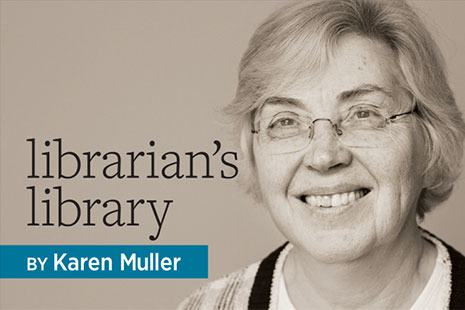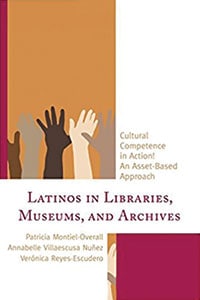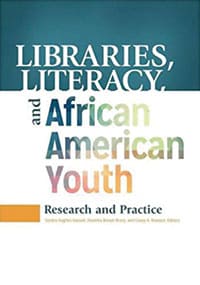
Last year, the American Library Association (ALA) library acquired a display case to highlight books in our collection. To mark the 125th anniversary of the opening of Ellis Island, we showcased books on the immigrant experience. The oldest is Aids in Library Work with Foreigners, published by ALA in 1912. Its tone is different from anything the Association would publish today, but it demonstrates how ALA has been actively working on issues of equity, diversity, and inclusion for most of its existence. With the amendment passed at the 2017 Midwinter Meeting that adds equity, diversity, and inclusion to the ALA Strategic Plan, a roundup of current titles on the topic seems in order.
 Creating Inclusive Library Environments: A Planning Guide for Serving Patrons with Disabilities, by Michelle Kowalsky and John Woodruff, begins with an overview of changes initiated because of the Americans with Disabilities Act (ADA) of 1990 and the follow-up ADA Amendments Act of 2008—changes designed to ensure a barrier-free environment. From there, the book covers policy writing and staff training, both key steps to ensure ADA compliance. Chapters on facilities design, daily operations, programming, and outreach have suggestions and tips applicable to all types of libraries, richly supplemented by boxed checklists and extensive references. Throughout, the authors stress the importance of cultivating a user-centered culture, even while ensuring individual privacy. ALA Editions, 2017. 232 P. $62. PBK. 978-0-8389-1485-4 (Also available as an ebook.)
Creating Inclusive Library Environments: A Planning Guide for Serving Patrons with Disabilities, by Michelle Kowalsky and John Woodruff, begins with an overview of changes initiated because of the Americans with Disabilities Act (ADA) of 1990 and the follow-up ADA Amendments Act of 2008—changes designed to ensure a barrier-free environment. From there, the book covers policy writing and staff training, both key steps to ensure ADA compliance. Chapters on facilities design, daily operations, programming, and outreach have suggestions and tips applicable to all types of libraries, richly supplemented by boxed checklists and extensive references. Throughout, the authors stress the importance of cultivating a user-centered culture, even while ensuring individual privacy. ALA Editions, 2017. 232 P. $62. PBK. 978-0-8389-1485-4 (Also available as an ebook.)
 Information Services to Diverse Populations: Developing Culturally Competent Library Professionals, by Nicole A. Cooke, begins with the key clauses from both the ALA Code of Ethics and the Library Bill of Rights, clauses that support the author’s thesis that “all community members should be privy to equal access and quality resources and services … that meet their specific information needs.” How an individual library serves the range of needs of its diverse users—and the groups that might be so designated are in themselves diverse, ranging from the homeless to homeschoolers, for example—will be unique to each community. Before presenting a range of possible specific outreach services, Cooke explores ways individuals can develop cultural competence, a key component of being able to deliver the services needed. Libraries Unlimited, 2016. 166 P. $65. PBK. 978-1-4408-3460-8 (Also available as an ebook.)
Information Services to Diverse Populations: Developing Culturally Competent Library Professionals, by Nicole A. Cooke, begins with the key clauses from both the ALA Code of Ethics and the Library Bill of Rights, clauses that support the author’s thesis that “all community members should be privy to equal access and quality resources and services … that meet their specific information needs.” How an individual library serves the range of needs of its diverse users—and the groups that might be so designated are in themselves diverse, ranging from the homeless to homeschoolers, for example—will be unique to each community. Before presenting a range of possible specific outreach services, Cooke explores ways individuals can develop cultural competence, a key component of being able to deliver the services needed. Libraries Unlimited, 2016. 166 P. $65. PBK. 978-1-4408-3460-8 (Also available as an ebook.)
 Cultural competence is the foundation of Latinos in Libraries, Museums, and Archives: Cultural Competence in Action! An Asset-Based Approach, by Patricia Montiel-Overall, Annabelle Villaescusa Nuñez, and Verónica Reyes-Escudero. The title requires definition and explanation. The authors explain their choice of the term “Latinos,” which encompasses the diversity of groups having a Spanish-language heritage and describe some of the groups and myths that continue. They explain the asset-based approach to working with communities, which uses the strengths and capacities of the community and shows how that approach can lead to true cultural competence, which merges cognitive, interpersonal, and environmental elements. The remainder of the book explores programs in all types of libraries, as well as health information services, special collections, archives, and museums. Rowman and Littlefield, 2015. 310 P. $55. PBK. 978-1-4422-5850-1 (Also available as an ebook.)
Cultural competence is the foundation of Latinos in Libraries, Museums, and Archives: Cultural Competence in Action! An Asset-Based Approach, by Patricia Montiel-Overall, Annabelle Villaescusa Nuñez, and Verónica Reyes-Escudero. The title requires definition and explanation. The authors explain their choice of the term “Latinos,” which encompasses the diversity of groups having a Spanish-language heritage and describe some of the groups and myths that continue. They explain the asset-based approach to working with communities, which uses the strengths and capacities of the community and shows how that approach can lead to true cultural competence, which merges cognitive, interpersonal, and environmental elements. The remainder of the book explores programs in all types of libraries, as well as health information services, special collections, archives, and museums. Rowman and Littlefield, 2015. 310 P. $55. PBK. 978-1-4422-5850-1 (Also available as an ebook.)
 One of the chapter heads in Suzanna Conrad’s Prison Librarianship Policy and Practice is “Neglect and Disadvantage: The Prison Library as the Forgotten Field of Librarianship.” For most of us, experience with library service to prisoners may start and end with a tour of a nearby facility during library school, yet the challenges faced by librarians who serve the incarcerated include the constraints of the venue, which include but are not limited to security, prisoners’ rights to use the library, and resources provided to the library. In some states, only one librarian serves all the prisons in the state. Conrad reviews the history and policies of prison libraries at the federal and state levels. Following a bibliographic review of aspects of prison librarianship, Conrad includes a summary of relevant court cases affecting prisoners’ right of access to the courts—or even just access to legal resources, as in a library. The final chapters cover ways public libraries and prisons have formed partnerships and a review of prison librarianship in practice. McFarland, 2017. 224 P. $45. PBK. 978-1-4766-6633-4 (Also available as an ebook.)
One of the chapter heads in Suzanna Conrad’s Prison Librarianship Policy and Practice is “Neglect and Disadvantage: The Prison Library as the Forgotten Field of Librarianship.” For most of us, experience with library service to prisoners may start and end with a tour of a nearby facility during library school, yet the challenges faced by librarians who serve the incarcerated include the constraints of the venue, which include but are not limited to security, prisoners’ rights to use the library, and resources provided to the library. In some states, only one librarian serves all the prisons in the state. Conrad reviews the history and policies of prison libraries at the federal and state levels. Following a bibliographic review of aspects of prison librarianship, Conrad includes a summary of relevant court cases affecting prisoners’ right of access to the courts—or even just access to legal resources, as in a library. The final chapters cover ways public libraries and prisons have formed partnerships and a review of prison librarianship in practice. McFarland, 2017. 224 P. $45. PBK. 978-1-4766-6633-4 (Also available as an ebook.)
 Libraries, Literacy, and African-American Youth: Research and Practice, edited by Sandra Hughes-Hassell, Pauletta Brown Bracy, and Casey H. Rawson, grew out of “Building a Bridge to Literacy for African-American Male Youth: A Call to Action for the Library Community,” a summit held in 2012 at the University of North Carolina at Chapel Hill School of Information and Library Science. The essays in this book are broader and explore how libraries can create more equitable and just services and programs for African-American youth. The research component includes a discussion of literacy as a social justice issue, culturally relevant pedagogy, the importance of stories, and characteristics of effective library services for this population. The practice component offers essays and case studies on storytimes that empower black children, working with African-American teens to be change agents, community partnerships, makerspaces, and other means of connecting research to practice. Libraries Unlimited, 2016. 250 P. $50. PBK. 978-1-4408-3872-9 (Also available as an ebook.)
Libraries, Literacy, and African-American Youth: Research and Practice, edited by Sandra Hughes-Hassell, Pauletta Brown Bracy, and Casey H. Rawson, grew out of “Building a Bridge to Literacy for African-American Male Youth: A Call to Action for the Library Community,” a summit held in 2012 at the University of North Carolina at Chapel Hill School of Information and Library Science. The essays in this book are broader and explore how libraries can create more equitable and just services and programs for African-American youth. The research component includes a discussion of literacy as a social justice issue, culturally relevant pedagogy, the importance of stories, and characteristics of effective library services for this population. The practice component offers essays and case studies on storytimes that empower black children, working with African-American teens to be change agents, community partnerships, makerspaces, and other means of connecting research to practice. Libraries Unlimited, 2016. 250 P. $50. PBK. 978-1-4408-3872-9 (Also available as an ebook.)


